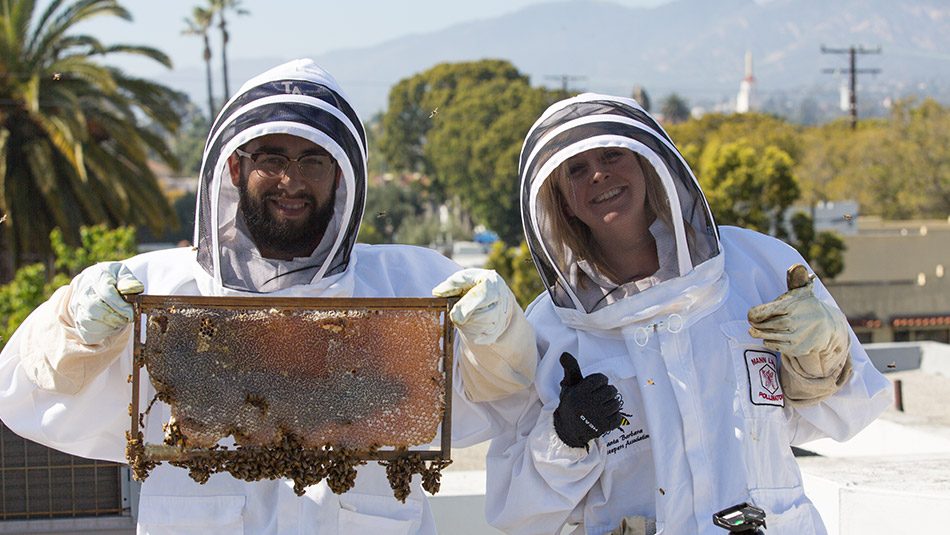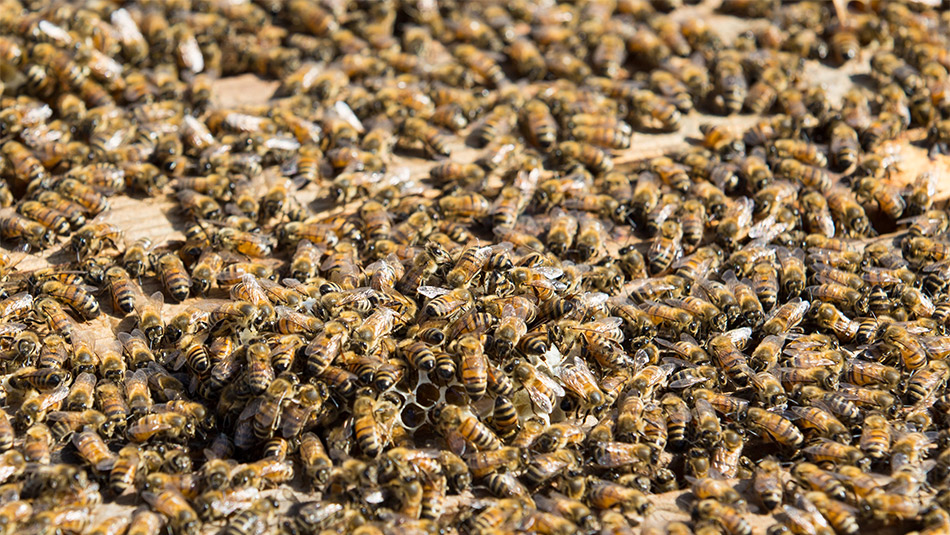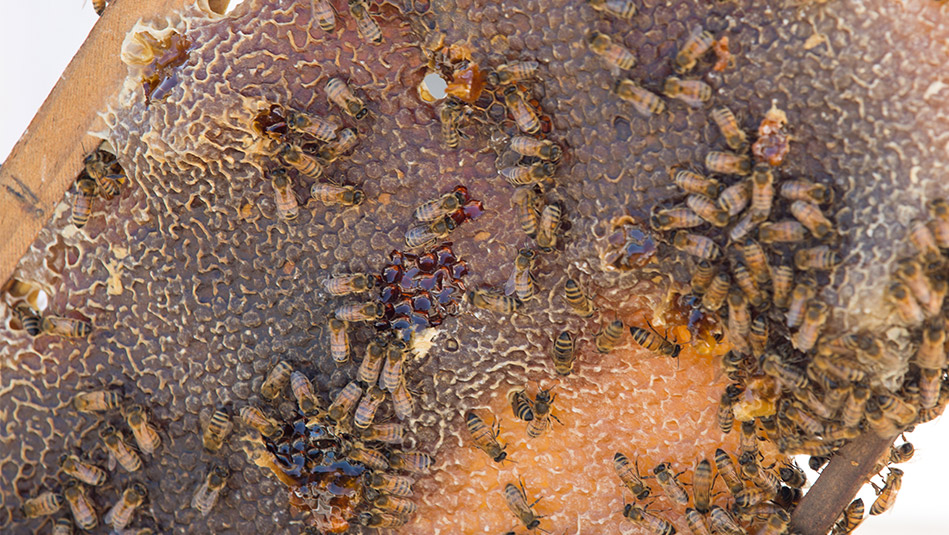
Beekeeping and Business: The Best Secrets To Success
When EvansHardy+Young first began working with the National Honey Board several years ago, I thought it might be useful and interesting to learn about beekeeping. So I located some bees, purchased some hive boxes and embarked upon a new hobby.
What started as a curiosity soon grew into a passion. And about a year ago, I decided to share that passion with my colleagues at work. So EHY established its own beehive, located on the roof of our office building. This hive is doing remarkably well and has led several other staffers to become interested in the art and science of keeping bees.
Working with and observing our company’s hive has led my fellow staffers and me to note some behavior that seems fundamental not only to the success of a beehive but the success of a business as well.
Here are a few of our observations that might have meaning for you, too.
60,000 Individual Workers? Or One Superorganism?
A successful beehive can easily have up to 60,000 bees. If you think of these bees as employees, that’s more than either General Mills (approx. 43,000 employees) or Kellogg’s (approx. 30,000 employees) – and the bees are all at the same location!
So how do bees manage to get anything meaningful done, given this abundance of participants, with no supervisor or company policy manual to guide them? They succeed because they don’t have individual agendas, and they don’t work for their personal benefit. Instead, they are selfless servants to the needs of the colony overall. It is only as a result of this singular focus on the hive’s overarching needs that a beehive can thrive. So, rather than 60,000 individuals, they become one powerful, highly effective superorganism, the parts of which are all working together toward the same goal. Just imagine what we could all accomplish in our business or personal lives with a similar singularity of focus!

All Hail the King, er, I mean Queen
For thousands of years, everyone mistakenly assumed that the leader of a beehive had to be a King, proving once again that the ill-considered roots of patriarchy run deep. Science didn’t start to catch on to the reality of a Queen Bee until the early 1600’s.
Perhaps even more important than historical gender bias in beekeeping is that there is only one Queen at a time. Kind of like the Pope. Hives do not tolerate multiple bees vying for queenhood in the same colony. A new queen is created by the colony only when the current queen begins to physically fail or is preparing to leave the hive with most of the bees, called swarming (more about that in a minute.)
The bees instinctively know that they can only have one leader at a time. The same holds true in business. Two strong individuals vying for the same leadership role rarely works out favorably for a business. More often than not, competing leaders result in organizational dysfunction, internal warfare or worse.
It’s Not About the Honey (or the money)
When I started keeping bees, I was eager to harvest honey as quickly as possible, believing that this honey was the best proof of my “superior” (yeah, right) beekeeping skills. With the passage of time, however, I have come to realize that honey is just as a byproduct of a far more important goal: A strong hive that is healthy and thriving. The honey (like money in the business world) is necessary to the hive’s survival but is probably not the best measurement by which to judge my true success. Seems like there is a metaphor for life in there somewhere…

The Power of Consistent, Small Steps Toward A Big Goal
The average worker bee produces a 1/12th teaspoon of honey in her lifetime. Said another way, bees fly about 55,000 miles over the course of about 2 million trips to create one pound of honey. And the average beehive produces between 20 and 70 pounds of honey per year. I’ll let you do the math on how many bee miles and bee trips that requires.
The point is that the seemingly impossible can be accomplished by taking small but consistent incremental steps toward a big goal.
Ya Gotta Bee-lieve
From time to time, bees decide to abandon their hive and fly off in a swarm. When this occurs, most of the bees, including the queen, cleave away from the existing colony and go in search of a new home. This is how bee colonies multiply. But this swarming behavior is not without a high level of risk. When the bees depart the hive, they leave without any food, and without knowing when or where they will find their next home. In fact, they don’t know if they will find a new home at all. As you can imagine, it doesn’t always work out well. Some swarms perish as a result of not finding suitable accommodations before their energy and stamina run out. But the bees swarm in spite of these significant risks. They abandon the comfort and security of their current hive because it is the only way for the species to multiply and survive.
Franklin Roosevelt expressed this same spirit when he inspired our nation to take bold action, by saying, “To reach a port we must set sail – Sail, not tie at anchor – Sail, not drift.” FDR was apparently on to something since things ultimately worked out pretty well for him (even though he didn’t keep bees.)
So, consider applying some bee wisdom to your own business. Create your own superorganism comprised of many sharing a singular vision and goal. Remember that although money is necessary, there are other more important and satisfying goals. Make sure only one person is in charge at a time. Remember that truly astonishing results can come from small but consistent incremental gains. And never lose your courage – don’t be afraid to set sail!





